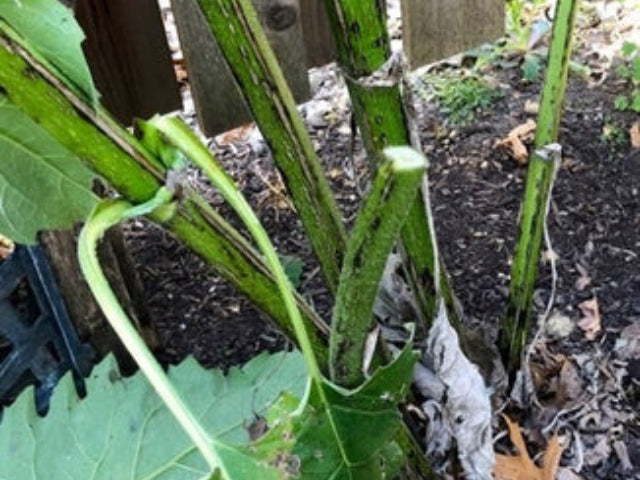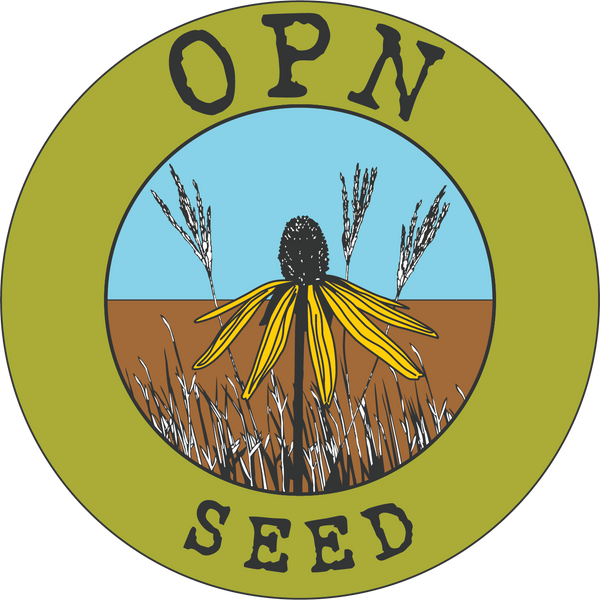
Stem Nurseries for Native Bees
Share
Open any gardening catalog and you'll likely see this:

Bee houses act as nurseries for cavity nesting bees. Bee houses aren't bad, but do require maintenance to be healthy for the native bees we wish to support. Regular cleaning and sanitizing is a must or your quest to be bee-friendly will end in sick bees. In such compact living quarters, fungi and disease can spread. Again, not a bad way to go, but requires a commitment to cleanliness.
Is there another way? YES! Where did cavity nesting bees lay before human-built bee houses? One place was and still is stems. I cut back a few of the Cup Plant stems in my yard as an example.

Cup Plant, Sweet Joe Pye and Ironweed provide natural cavity nesting areas for native bees.

The pith, or spongy center of this plant will degrade leaving a hollow center.

Stems are close, but not compact. This reduces the chance of fungi or disease spreading among nesters.
When pruning back hearty-stalked natives, consider cutting high. Leave stems 18" or so long. Winter will prepare them for spring as the soft inner pith fades away leaving behind a hollow tube ready for mason and leafcutter bees to lay.
